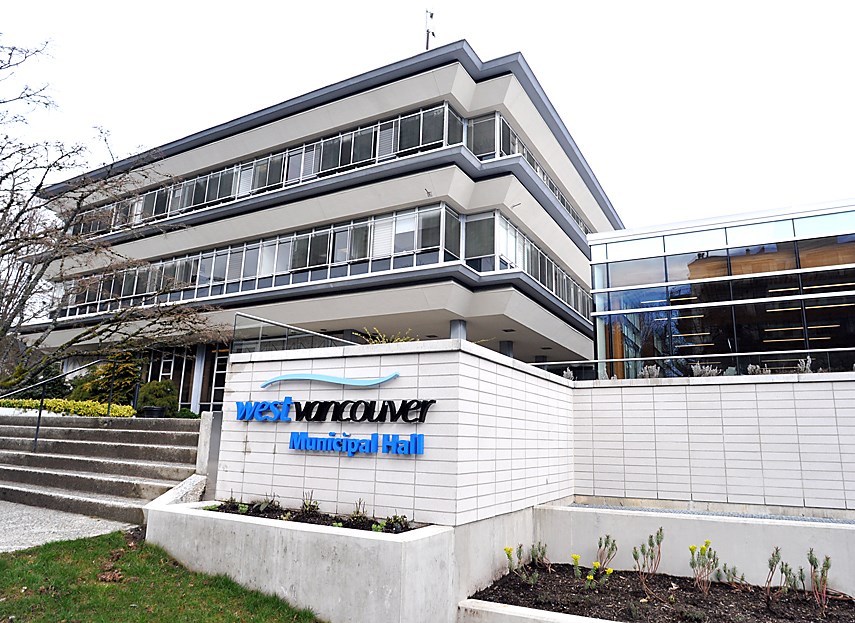The District of West Vancouver could grow by another 10,000 people by 2041 under its proposed new official community plan.
Council voted unanimously Monday night to give first reading to its new OCP bylaw, which has been in various stages of consultation for the last 18 months.
Once approved, the OCP will be West Vancouver’s “umbrella” policy document that gives council direction on land use, parks and environment, the local economy, transportation and social well-being.
But land use generally and housing in particular get most of the attention. The plan foresees West Vancouver adding another 5,000 units of housing over the next 25 years, a growth rate of 0.87 per cent per year.
Of those units, the district expects 300 to 400 would be in the form of infill housing like coach houses, single-family subdivisions and duplexes. Another 300 to 350 would be the “missing middle” form of housing – townhouses and triplex in pockets along Marine Drive. Much of the new development (1,700 to 2,100 units) will be clustered around existing town centres including 200 to 300 units in Horseshoe Bay, 500 to 600 on the Taylor Way corridor and 1,000 to 1,200 in the Ambleside area. All of those, however, are subject to council creating local area plans for each town centre in consultation with the community. The plan also anticipates a new village centre to be constructed off Cypress Bowl Road.
The goal, according to the document, is to create housing options for demographics disappearing from West Vancouver, particularly young families. While the municipality has committed to accepting one per cent of all growth in Metro Vancouver, West Vancouver’s population has actually been in decline, according to the last census. Of the district’s entire stock of multi-family housing, 96 per cent was built in the 1960s and ’70s.
On transportation, the plan seeks to reduce the amount of driving West Vancouverites do by one-third, while increasing seven-fold the number of trips made via active transportation – walking, cycling and transit. To that end, the plan calls for the completion of the Spirit Trail from Horseshoe Bay to North Vancouver, as well as looking into more aspirational projects including ferry and rail service, new crossing over the Capilano River and a theoretical new Low Level Road.
In broad strokes, the measures included in the plan have community support, according to surveys done by staff as the plan has progressed. Since the process started, the OCP has had roughly 3,000 pieces of feedback from the community, according to staff.
That was more than enough to have the document ready to go for its final public vetting, said Coun. Mary-Ann Booth.
“There is absolutely no doubt in my mind that we have had sufficient consultation under (the law) and that those who wanted to be engaged, were,” she said.
Coun. Nora Gambioli agreed.
“This document is essentially what the community has told us,” she said.
Council watcher Scenery Slater, however, said the plan is too general to be adequately judged and its real test will be when residents see what changes are being proposed for their own neighbourhoods.
“We have been assured that the real detail – the aspects much of the community has a keen interest in – heights, density, views etc. will be established later during the local area planning. So I say get on with it. Let’s find out if the public do or do not want Ambleside village to turn into a metropolitan town centre,” she said.
Mayor Michael Smith said he is facing a critical mass of constituents telling him West Vancouver is in need of the changes the OCP calls for.
“We need to make change and change can be positive. Nobody is suggesting we’re changing the nature of West Vancouver. We’re talking about making our community more relevant for all. Change is a positive thing. It makes things better. We don’t want to be stuck in the 1950s forever,” he said.
While municipal growth can be a sore point, Coun. Craig Cameron pointed out that totals expected are still quite modest compared to the rest of the region – and that West Vancouver hasn’t been taking its share of growth already.
“We’re in deficit position. There’s been years of stagnation in the community and the result is that we’ve got a severe lack of housing diversity and a number of other social and economic challenges in the community and the community is slowly but surely hollowing out,” he said. “The fear is if this trend continues, we won’t recognize West Vancouver.”
A public hearing on the OCP has been scheduled for June 18.



